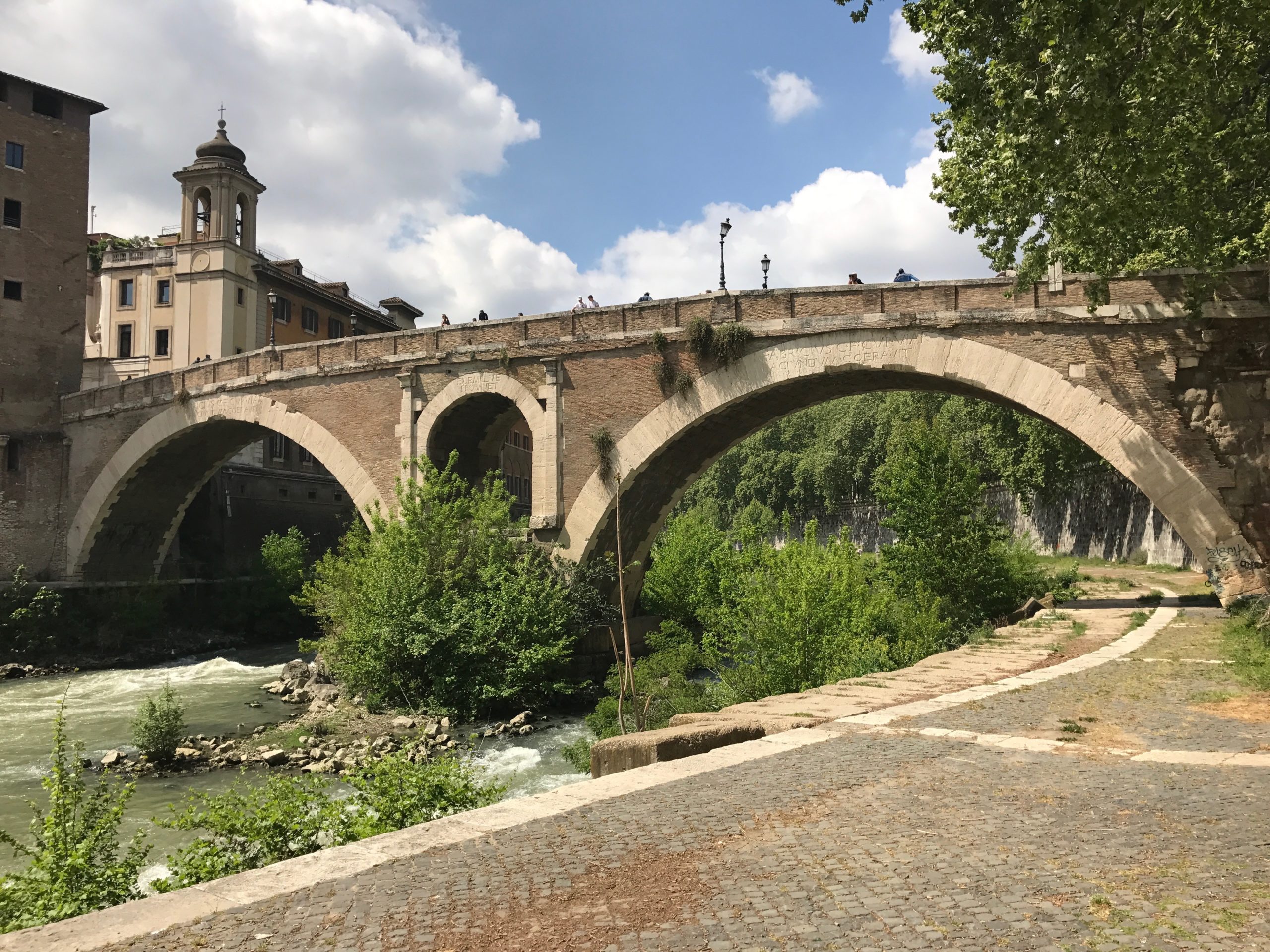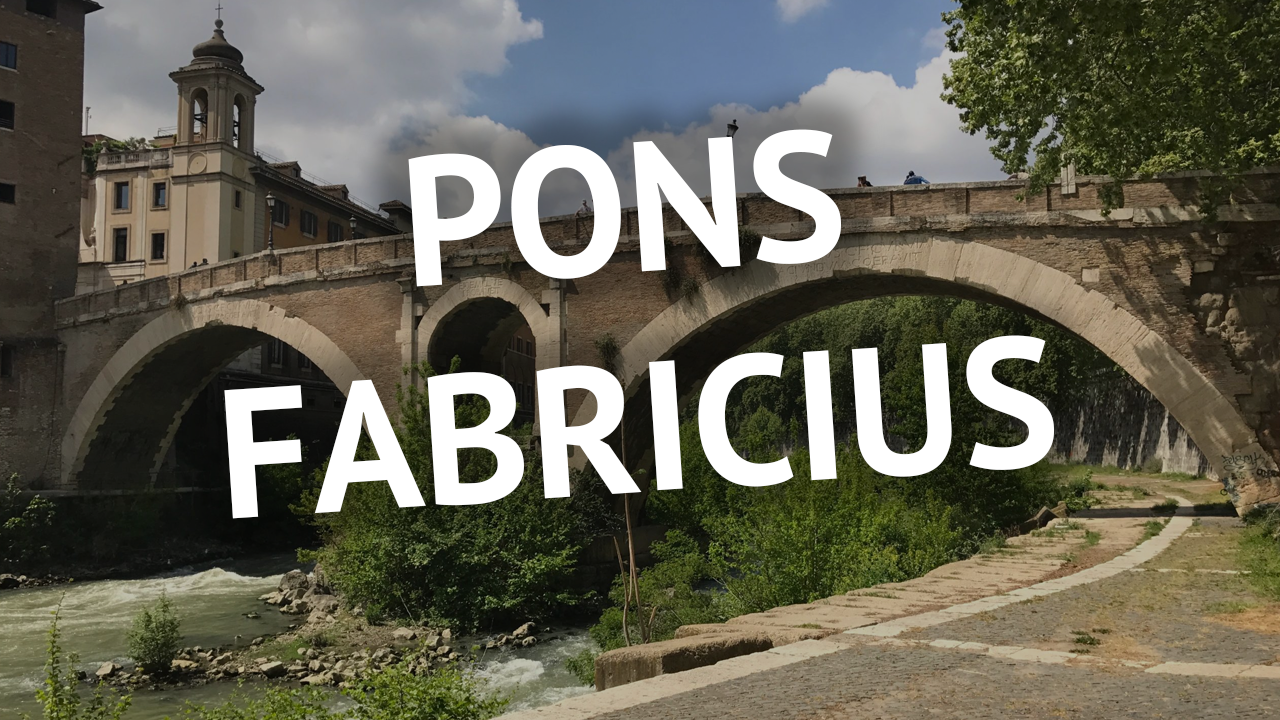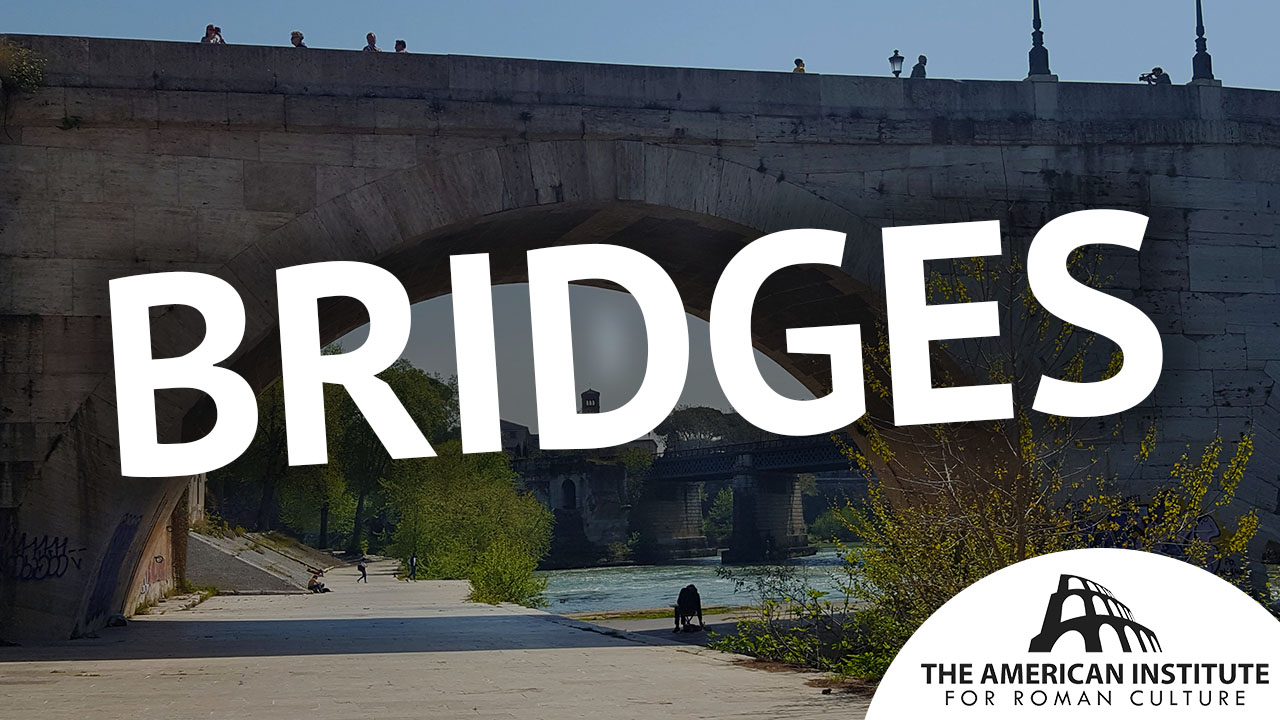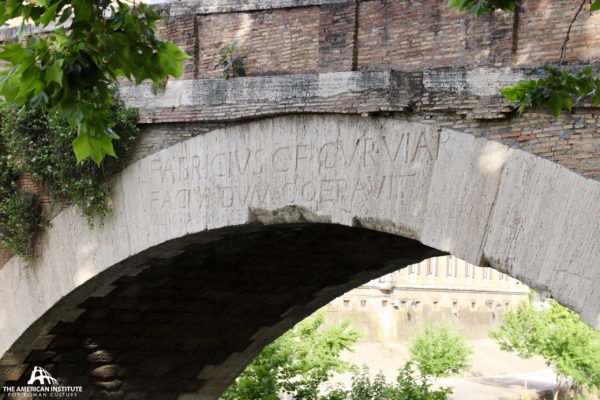This is the oldest bridge in Rome, dating to 62 BC. It joins the Campus Martius area to the Tiber Island. Today it is a pedestrian bridge. The successful use of building materials and engineering (the arch) are quintessential features of Roman construction, manifested in this bridge, which has withstood millennia of floods (until the contraction of the 1870 flood walls).
Explore further:
PONS FABRICIUS, the stone bridge between the left bank of the river and the island, named from its builder, L. Fabricius, curator viarum in 62 B.C. (Hor. Sat. ii. 3.35-36; and Porphyr. ad loc.; Cass. Dio xxxvii. 45).
Read more:
The erection of this bridge is recorded in duplicate inscriptions, over the arches on each side, and a restoration in 21 B.C. after the flood of 23 B.C. (Cass. Dio liii. 33) by the consuls, Q. Lepidus and M. Lollius, in another inscription over the arch nearest the city (CIL ia. 751=vi. 1305=31594). It is probable that this stone bridge replaced an earlier one of wood. In the Middle Ages it was known both by its official name (Not. app.; Pol. Silv. 545; Mirab. II) and as the pons Iudaeorum (Graphia 10) because it was close to the Ghetto.
This is the best preserved bridge in Rome, being practically the original structure. It is built of tufa and peperino faced with travertine, part of which has been replaced with brick, and has two semi-circular arches with a smaller one between. The bridge is 62 metres long, and the arches are 24.25 and 24.50 metres wide. The present parapet was constructed in 1679 by Innocent XI, but the original was divided into panels by pilasters supporting four-faced hermae and connected by a bronze balustrade. The two pilasters and hermae at the east end are original, and from them the modern name of the bridge, Ponte dei Quattro Capi, is derived (Jord. i. I. 418-419; HJ 632; Mitt. 1891, 135 ; Besnier 93-105; TF 142; for an erroneous identification with the pons Aemilius, CIL 2. p. 325; Mayerh6fer, Gesch.-topograph. Studien ii. d. alte Rom, ch. I pass.). See ill. 32, 37.
This content is brought to you by The American Institute for Roman Culture, a 501(C)3 US Non-Profit Organization.
Please support our mission to aid learning and understanding of ancient Rome through free-to-access content by donating today.
Cite This Page
Cite this page as: Darius Arya, The American Institute for Roman Culture, “Pons Fabricius” Ancient Rome Live. Last modified 05/08/2020. https://ancientromelive.org/pons-fabricius/
License
Created by The American Institute of Roman Culture, published on 10/24/2019 under the following license: Creative Commons: Attribution-NonCommercial-ShareAlike. This license lets others remix, tweak, and build upon this content non-commercially, as long as they credit the author and license their new creations under the identical terms. Please note that content linked from this page may have different licensing terms.





